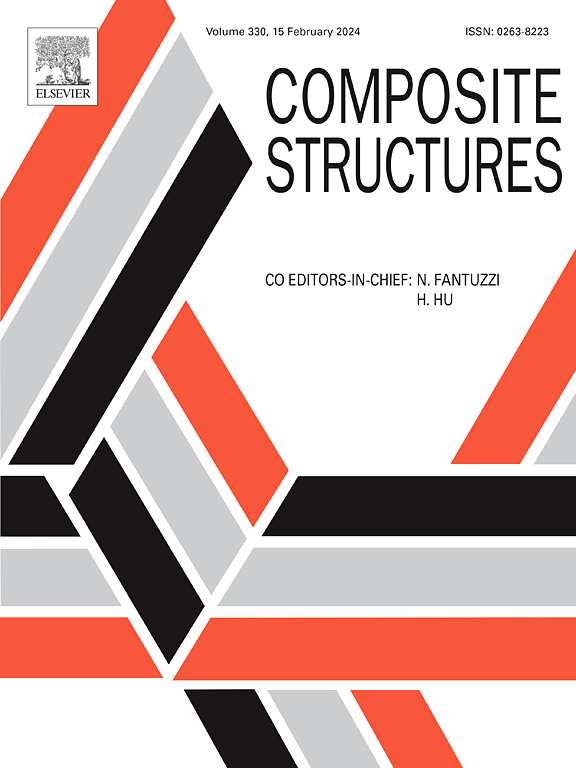The effects of environmental conditions on the failure of double lap composite joints with different overlap lengths and adherend thicknesses
IF 6.3
2区 材料科学
Q1 MATERIALS SCIENCE, COMPOSITES
引用次数: 0
Abstract
This paper provides a comprehensive study of the effects of environmental conditions on the failure of Double Lap Joints (DLJ) with composite adherends of different overlap lengths and thicknesses. The environmental conditions tested are Room Temperature Dry (RTD), Hot Temperature Dry (HTD) and Hot Temperature Wet (HTW). The mechanical properties of both the adhesive and composite adherends were characterised at these environmental conditions, showing conflicting trends. A new way of presenting the data based on simple calculations of strength or fracture dominated failure allows all the data to be shown on a single plot, and satisfactorily explains the failure modes, failure loads and opposite trends observed for a total of 13 DLJ configurations tested at the three environmental conditions.
环境条件对不同搭接长度和粘接厚度双搭接复合材料接头破坏的影响
本文全面研究了环境条件对不同搭接长度和厚度的复合材料双搭接失效的影响。测试的环境条件为室温干燥(RTD)、高温干燥(HTD)和高温潮湿(HTW)。在这些环境条件下,胶粘剂和复合胶粘剂的机械性能都表现出相互矛盾的趋势。一种基于强度或断裂主导破坏的简单计算的数据显示新方法允许所有数据显示在单个图上,并令人满意地解释了在三种环境条件下测试的13种DLJ结构的破坏模式、破坏载荷和相反趋势。
本文章由计算机程序翻译,如有差异,请以英文原文为准。
求助全文
约1分钟内获得全文
求助全文
来源期刊

Composite Structures
工程技术-材料科学:复合
CiteScore
12.00
自引率
12.70%
发文量
1246
审稿时长
78 days
期刊介绍:
The past few decades have seen outstanding advances in the use of composite materials in structural applications. There can be little doubt that, within engineering circles, composites have revolutionised traditional design concepts and made possible an unparalleled range of new and exciting possibilities as viable materials for construction. Composite Structures, an International Journal, disseminates knowledge between users, manufacturers, designers and researchers involved in structures or structural components manufactured using composite materials.
The journal publishes papers which contribute to knowledge in the use of composite materials in engineering structures. Papers deal with design, research and development studies, experimental investigations, theoretical analysis and fabrication techniques relevant to the application of composites in load-bearing components for assemblies, ranging from individual components such as plates and shells to complete composite structures.
 求助内容:
求助内容: 应助结果提醒方式:
应助结果提醒方式:


